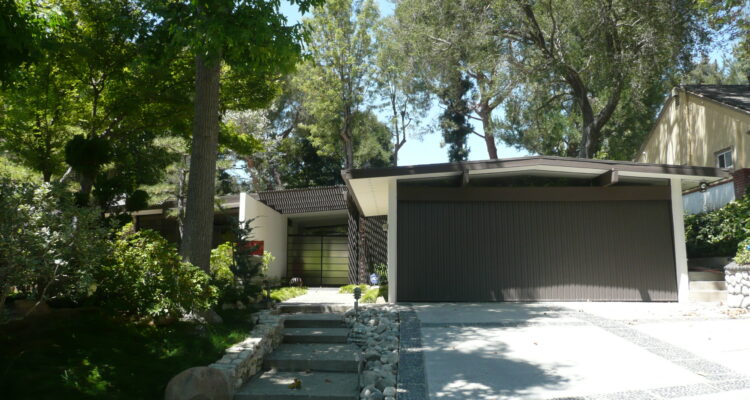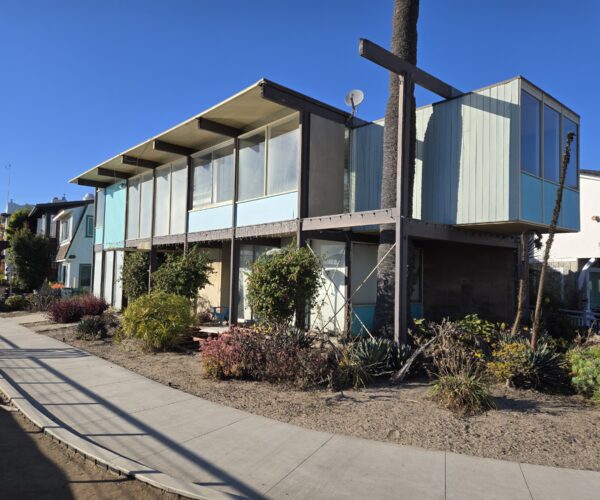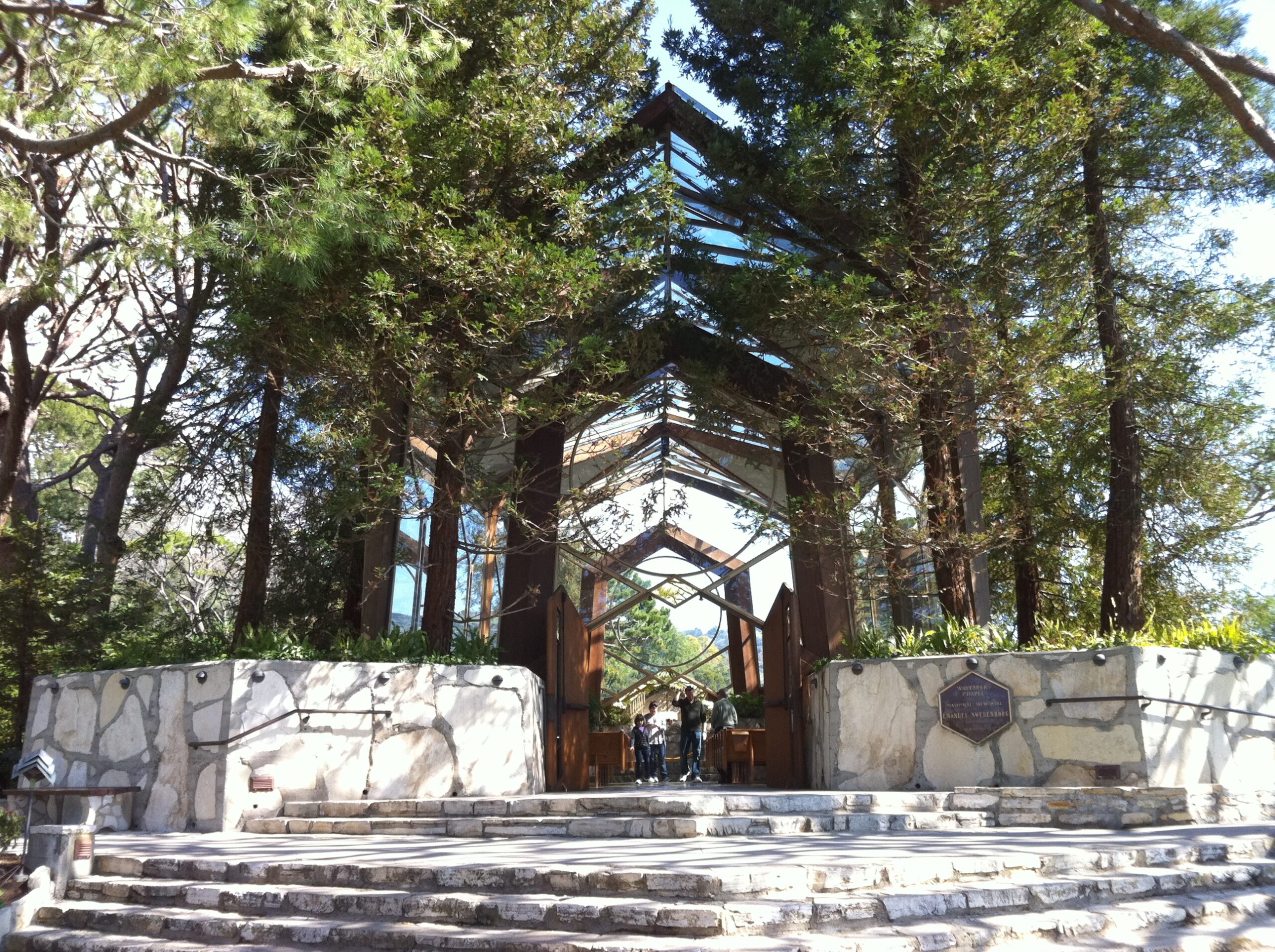
Place
Phineas Kappe Residence
Completed in 1956, the Phineas Kappe Residence represents one of the architect’s earliest designs, but it exhibits all the trademarks for which he would become known: post-and-beam construction, an open interior plan, patio spaces and expanses of glass to bring the outside inside, and a focus on the details of craftsmanship and materials.
Place Details
Address
Get directions
Architect
Year
Style
Decade
Designation
Property Type
Community
Architect Ray Kappe is renowned for his magnificent residential designs, at least five examples of which are located on and around Royal Woods Drive in the Sherman Oaks/Encino area.
One of these houses is the Phineas Kappe Residence on Woodcrest Drive, which Kappe designed for his parents in classic Mid-Century Modern style. Completed in 1956, this house represents one of the architect’s earliest designs, but it exhibits all the trademarks for which he would become known: post-and-beam construction, an open interior plan, patio spaces and expanses of glass to bring the outside inside, and a focus on the details of craftsmanship and materials.
Kappe combines his interest in technology and engineering with a use of rustic materials, in a style which would come to be known as a variation of California Modern.
The house’s main entry is recessed, sitting behind a garage and below a wooden pergola; a rock-lined walkway leads up to it, next to a jutting stucco wall. A low-pitched roof emphasizes the horizontal feel of the house. The interior features vaulted ceilings, a private garden area, and even an interior reflecting pool to further blur the line between the building and the lush wooded landscape in which it sits.
The Phineas Kappe Residence is a classic and lesser-known illustration of Kappe’s vision for modern architecture in California.


